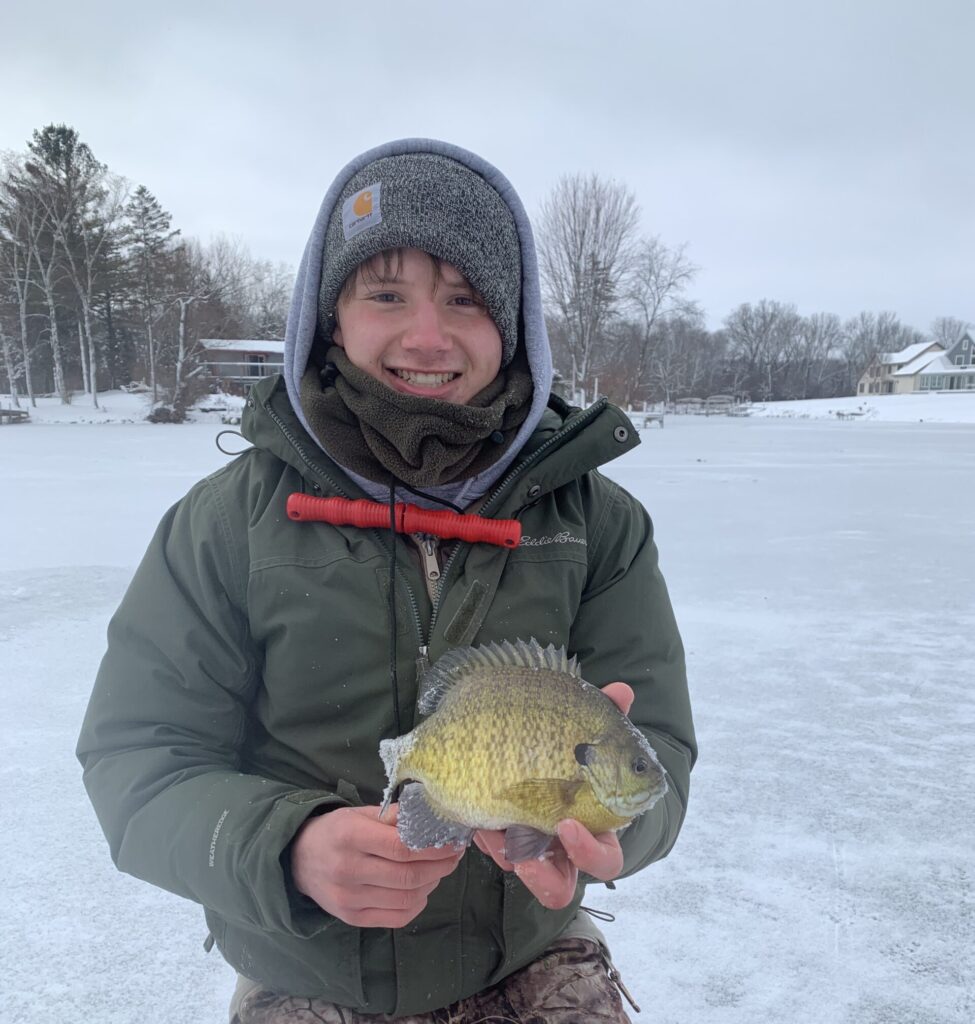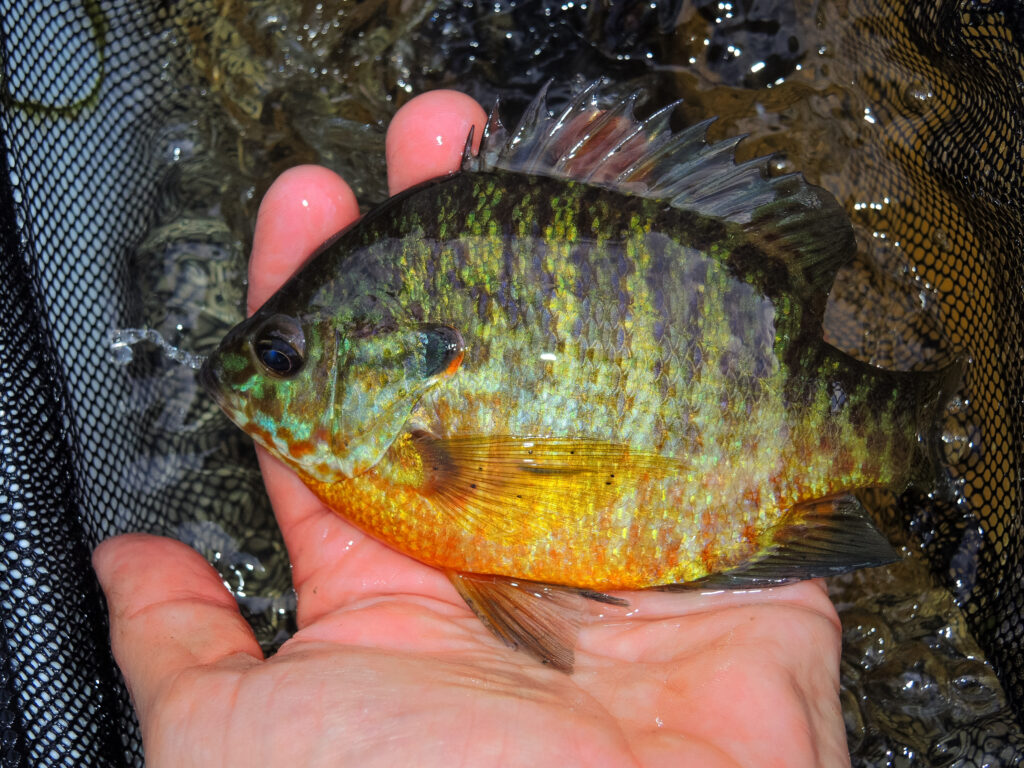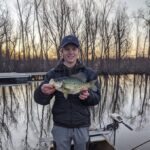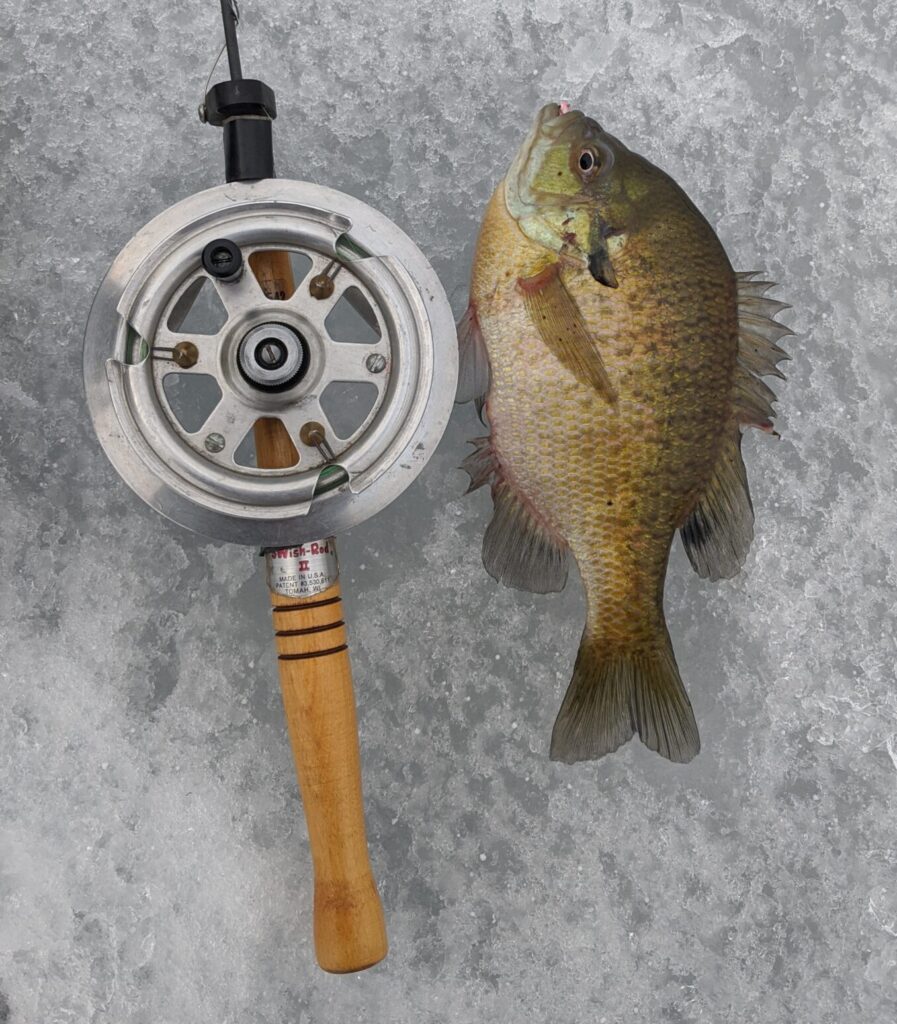Hey there fellow anglers! Whether you’re a seasoned ice fisherman or a beginner just starting, there’s nothing quite like the excitement of ice fishing for panfish. I’ve spent hours out on the frozen lakes, and panfish are one of my favorite species to target through the ice. Unlike other species, panfish can provide excellent action and tend to be willing to bite most times throughout the winter. In this guide, I’ll share everything you need to know to have a blast catching those tasty panfish under the ice. As always, fishing education and conservation are our priorities here at The Angler’s Line. Feel free to sign up for our free newsletter to join our community and stay up to date! Lets get started!
Table of Contents:
- Panfish Behavior
- Ice Fishing Gear
- Ice Fishing Techniques For Panfish
- Panfish Ice Fishing Lures
- Panfish Location
- Preperation
- Conservation
Understanding Panfish and Their Behavior
First things first, let’s get to know our scaly targets – panfish! The panfish category includes bluegill, crappie, perch, and more. Each of these species have their own nuances, but a lot of their preferences are similar. They might be small in size, but boy, can they put up a fight! Knowing their behavior and where to find them is key to a successful ice fishing trip for panfish.
During the winter months, you can find panfish in shallow water or deep water depending on the body of water and time of year you are ice fishing. Understanding panfish forage is key to determining whether the panfish species in your lake will be shallow or deep
Essential Gear and Equipment
I usually say that panfish don’t require specialized gear to target. Ice fishing is one exception. Experienced panfish ice fisherman know the importance of having an extremely sensitive rod to detect even the most subtle of bites.
Ice Fishing Rods For Panfish
The most important thing to look for in a ice fishing rod for panfish is the rod tip sensitivity. There are two main types of panfish ice fishing rods on the market; a noodle rod and a rod with a spring bobber. Both of these rods help you detect bites visually by having an extremely lightweight tip. Fisherman have different preferences, so be sure to test compare the noodle rod vs spring bobber rods before choosing. Panfish bites can be subtle, so a responsive rod will help you feel those gentle taps.
Ice Fishing Reels For Panfish
The two main types of ice fishing reels are spinning reels and in-line reels. The advantage of in-line ice fishing reels is that they help to prevent line twist. Line twist makes your lure spin under the water which is something you want to avoid. If using a spinning reel, change your line frequently to minimize twisting. A size 500 reel is ideal for ice fishing panfish.
Ice Fishing Line For Panfish
For panfish, go with light fishing line, and I mean light! I recommend a fishing line between 2 to 4-pound test for panfish. If you choose a line that is too heavy, you won’t be able to effectively fish the light panfish ice jigs and lures. The two best lines in my opinion for ice fishing are fluorocarbon and monofilament. Braided fishing line tends to collect water and freeze. Make sure to choose a fishing line specifically designed for ice fishing, as these lines are meant to preform better in cold weather.
Ice Augers
To drill those holes, you’ll need an ice auger. For panfish, I would recommend a manual or electric-powered auger. Manual augers are inexpensive and get the job done on thinner ice. When the ice gets thicker or if you want to drill several holes throughout the day, you’ll definitely prefer the speed and convenience or an electric-powered one. As far as auger size goes, a 5″-8″ auger works well for panfish. Any smaller and you may have trouble landing fish. Any larger and you’ll waste your energy or battery for no reason.
Ice Fishing Safety Equipment
Safety first, especially when it comes to ice fishing! Ice picks and a throwable flotation device are non-negotiable. Ice conditions can change rapidly, so be prepared. If you plan on heading out on early ice, always check the ice first with a spud bar. Ice is rarely uniform in thickness, so spud regularly to make sure the ice is thick enough. Finally, dress appropriately for the cold conditions and bring plenty of layers. Waterproof gear is essential in keeping you warm and dry on the ice!

Ice Fishing Techniques for Panfish
Now that you’re geared up, it’s time to talk strategy. Panfish can be finicky in the winter, so be ready to switch up your techniques.
Jigging
Jigging is probably one of the most common techniques used for targeting panfish through the ice. The jigging technique refers to using a small jig with either live bait or a soft plastic. You can choose to either use a lead or tungsten jig. Tungsten is more expensive, but well worth it in my opinion. Tungsten is denser than lead, making the same size jig weigh more and fish easier through the ice. When jigging for panfish through the ice, use a very delicate quiver of the rod tip. Experiment with your cadence and watch your electronics closely to determine what the panfish respond best to on a given day.
Tip Downs
Tip downs are a popular technique to spread out lines and cover water for panfish. This technique refers to a dead stick rod with live bait that is balanced upright. When a fish bites, the rod tips downward. This technique works best when fish are finicky and you want to cover a larger area. The one downside to tip downs is that they tend to be difficult to fish with in heavy winds or extremely cold conditions.
Tip Ups
Most ice anglers probably think of tip ups for game fish, but they are underrated when it comes to fishing for panfish. Tip ups work well with small minnows when targeting perch or crappie. They allow you to cover water and work well in cold and windy conditions. Make sure to use light leader line and small hooks when fishing tip ups specifically for panfish.
Ice Fishing Lures For Panfish
There are a wide range of ice fishing lures available for panfish today, but I hope to simplify that into three main categories. Jigs, spoons, and live bait are all you really need to catch panfish in the winter wherever you may go. Experiment until you find what they’re biting on that day.
Tungsten Jigs
Tungsten jigs are one of the most versatile lures you can use when ice fishing for panfish. Tungsten is denser than lead, which allows the jig to be heavier than a lead jig that is the same size. A heavier jig allows your jig to drop faster and break through any slush in the top of your hole. For panfish, I recommend a tungsten jig between 1/64 oz and 1/16 oz. Tip your tungsten jig with either your choice of live bait or plastics.
Ice Fishing Spoons
Ice fishing spoons not only work well for game fish, but also are great options for panfish. Spoons create flash and fall very quickly, making them great options for stained or deep water. For panfish, I recommend a spoon between 1/32 oz and 1/8 oz. Although not necessary, feel free to tip the treble hook with your live bait of choice for some added scent.
Live Bait
The most popular types of live bait used for ice fishing panfish are minnows, wax worms, and wigglers. Small fathead minnows work best when targeting crappie or perch. Wax worms work well through the ice for ever type of panfish. Wigglers work for all panfish as well, but excel when perch fishing.
Locating Panfish Through The Ice
No luck finding the panfish yet? Don’t worry; we’ll get you on the right track. Typically panfish can be found either on shallow flats or mid-lake basins. But before we can talk specific location, its important that you understand how to effectively use your electronics first.
Understanding Ice Fishing Electronics
When ice fishing, your electronics are one of the most important tools to helping you locate and catch panfish. If you are using a flasher, look for any suspended marks you see off of bottom. These are fish. Additionally, flickers on the bottom can indicate nearby fish as well. Panfish will typically show up in schools whereas game fish will come through in singles. With a little experience, you will be able to decipher which species of fish you are marking with your ice fishing electronics.
Shallow Flats
I have found that shallow flats come into play when ice fishing in deep and clear bodies of water. I consider a shallow flat anywhere under 10′ of water. Not all shallow flats are created equal however. Vertical structure is key. When I say vertical structure, what I mean is vegetation, submerged wood, or any other piece of cover that sites vertically in the water column. This structure provides cover for panfish and attracts small insects and minnow that they feed on. When fishing shallow flats on these deep clear lakes, stealth is key. Drill minimal holes and stay as quite as possible to avoid spooking fish. It is more of a waiting game on these types of spots.
Deep Basins
The other popular location to look for panfish through the ice is basin areas. These are the deepest parts of lakes that are surrounded by shallower water. I like targeting basins on lakes that have slightly more stained water and reach depths around 20′-30′ at the deepest point. Mud bottom is important for basin areas since it attracts insects and other forage. Unlike shallow flats, actively search for panfish in these deeper basin areas . Continue to drill holes and move around using your electronics until you see schools of panfish. These are typically very large areas, so don’t waste your time dropping a line until you see fish.
Preparing for a Successful Ice Fishing Trip
Almost ready to hit the ice! Just a few more things to consider.
Dressing Appropriately for Cold Weather Conditions
Layers, layers, layers! Be sure to dress warmly to stay comfortable during your ice fishing adventure. Even if the temperature seems fairly warm, remember that you will be sitting on a frozen lake. Don’t forget waterproof and insulated boots to keep your feet dry.
Safety Precautions on the Ice
Always check the ice thickness before venturing out. Four inches or more is generally safe for walking, but it’s best to consult local authorities or experienced anglers for ice conditions. Check an ice thickness chart before heading out to verify whether the ice is thick enough for walking, using an ATV, driving a car, etc.
Conservation and Ethical Fishing Practices
As responsible anglers, it’s crucial to prioritize conservation and practice ethical fishing

Catch and Release
Adhere to catch-and-release guidelines whenever possible to preserve the panfish population for future generations. Handle fish with care, use barbless hooks to minimize injury, and return them to the water as quickly and gently as possible. If you plan on keeping a few fish for a meal, release the larger fish to let them spawn.
Regulations and Limits
Stay informed about local fishing regulations and adhere to size and bag limits. These limits are in place to ensure sustainable fish populations and healthy ecosystems. Ignorance is no excuse, so take the time to familiarize yourself with the specific regulations in the areas you fish.
Leave No Trace
Respect fish and wildlife habitats by minimizing your impact and leaving the environment as pristine as you found it. Dispose of any trash properly and consider participating in organized shoreline cleanups. Respecting nature and its resources is crucial for future generations of anglers to enjoy.
And there you have it, folks! I hope this guide has given you the confidence and knowledge to embark on your own ice fishing adventure for panfish. Whether you’re a seasoned pro or a first-timer, remember to enjoy the journey and respect the beauty of nature.
Stay safe out there, and tight lines!
More Panfish Fishing Articles:
- Lure Talk: Best Crappie Lures For Each Season

- Ice Fishing For Crappie: Everything You Need To Know

- Slip Bobber Crappie Fishing: Everything You Need To Know

- Summer Panfish Fishing: Everything You Need To Know

- Ice Fishing For Panfish: Everything You Need To Know

- Fall Panfish Fishing: Everything You Need To Know

